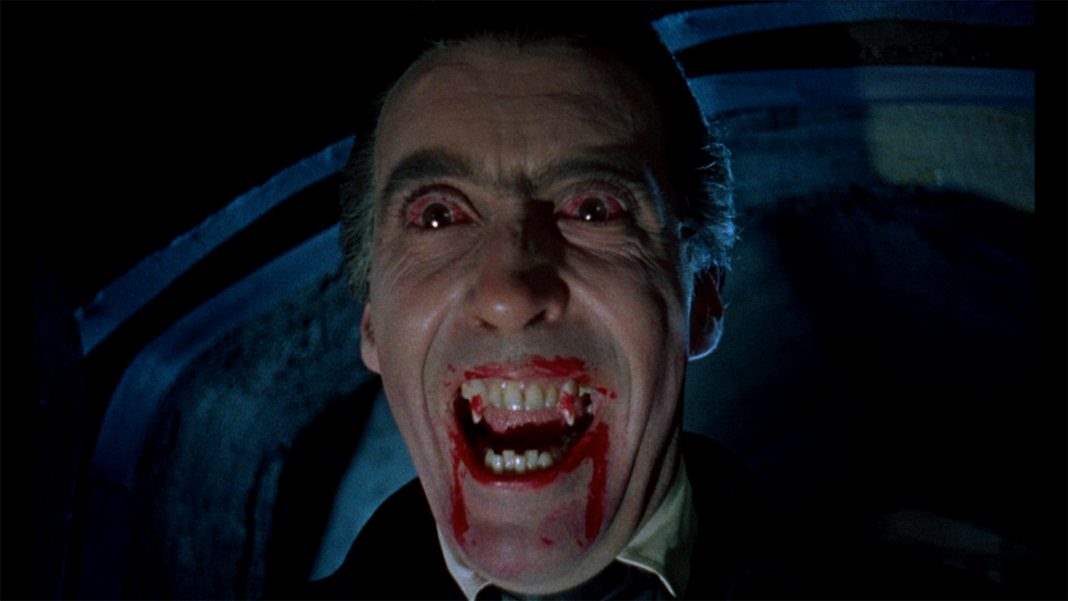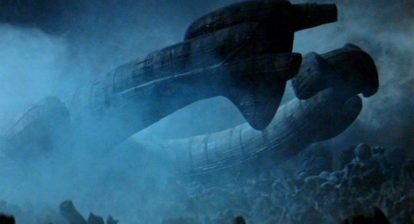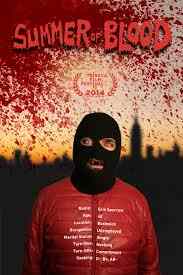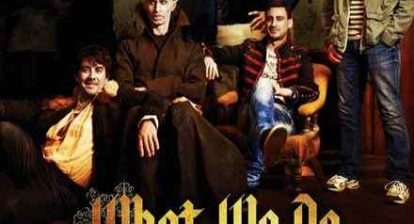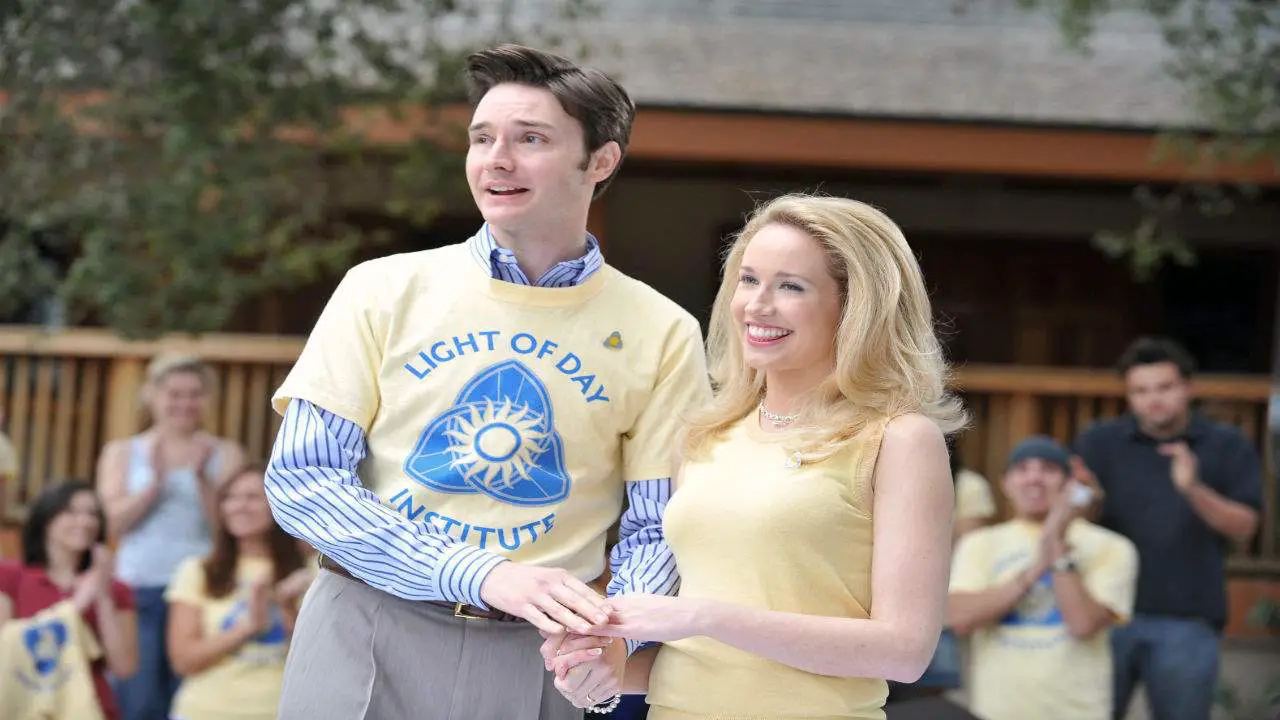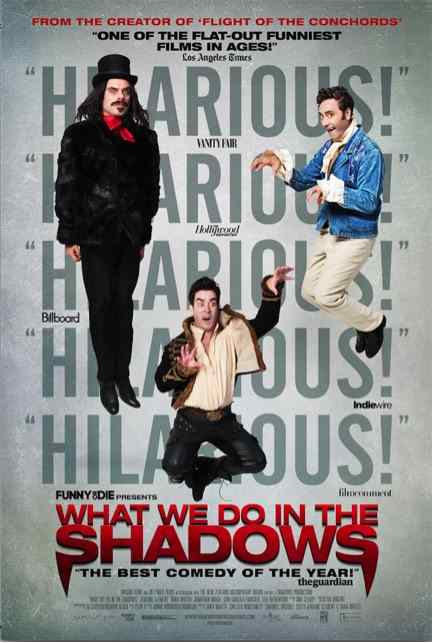No two Dracula movies are the same. Considering that the character been adapted to the screen more than any other fictional being, save Sherlock Holmes, that shouldn’t come as too much of a surprise. But as an avid fan of the book, it can be maddening. Or, at least, it used to be. As a kid and even as a teen obsessed with the novel, I couldn’t stand the endless changes that were made to the story, often for no reason at all. Major characters would be erased completely. Some characters would become the daughter or parent of other characters. And these are standard practices for virtually every adaptation.
But then I had an extremely welcome moment of clarity. The more I began complaining about these movies, almost solely for the fact of complaining about changes to the book, the more I realized that I was complaining about movies I love. Not all of them, of course. But there are a lot of Dracula adaptations I think are great, and they have nothing to do with the book, a lot of the time. The structure is there, but much of the characterization is changed almost completely.
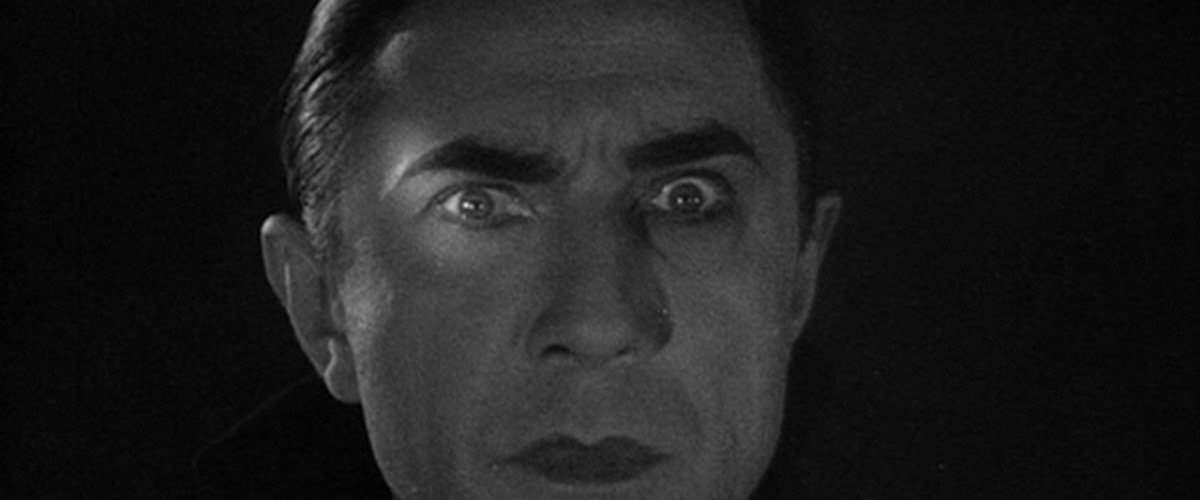
The romantic, lovelorn vampire, the Count who sees Mina as the reincarnation of his long-lost love, none of that was in the book. That’s why people are so quick to condemn Bram Stoker’s Dracula for its claim to be the most faithful to the novel, despite the focus of the narrative really being centered on that relationship. The Count’s scene with Mina in the book is effectively a rape, so it’s a problematic situation. But the change to make Dracula a romantic figure focused on a specific love interest gives the story a much clearer thru-line and three act structure that you definitely need when translating to film.
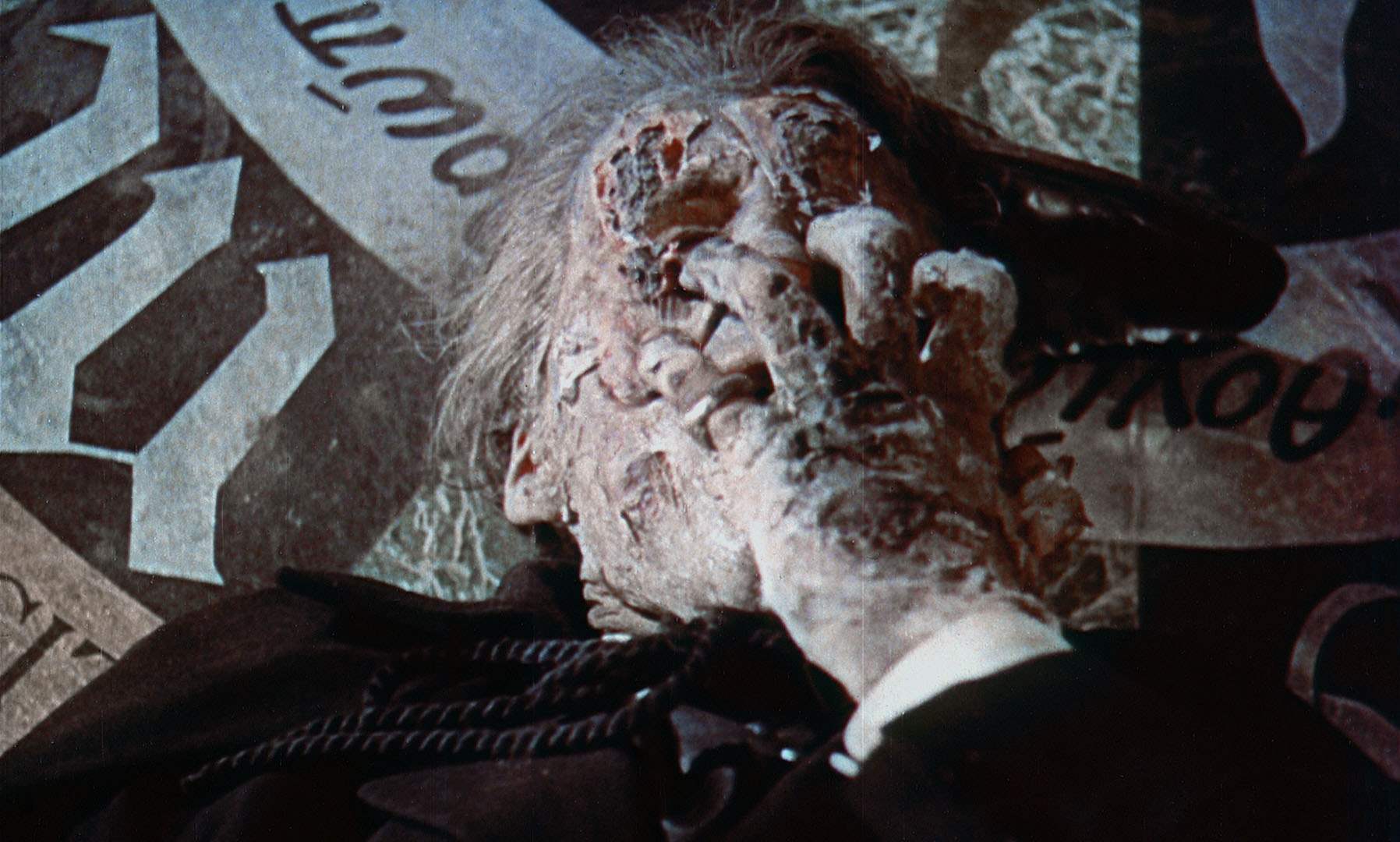 Through most adaptations, Dracula is still a predator. He’s still a bad guy. Even in the most romantic adaptation, John Badham’s ’79 Dracula, Dracula is undoubtedly the villain.
Through most adaptations, Dracula is still a predator. He’s still a bad guy. Even in the most romantic adaptation, John Badham’s ’79 Dracula, Dracula is undoubtedly the villain.
When stories last as long as this one has, they’re open to all kinds of new interpretations. Dracula, to me, is a lot like Batman, and not just because of the mutual fondness for bats. There’s a Batman for everyone. There’s the campy, ‘60s Adam West version, the tortured Michael Keaton, the understated and dramatic Christian Bale, and the aggressive, nightmarish Ben Affleck. There are wildly different versions of this character out there to be admired by any audience that sees them.
There’s even more of that with Dracula. You can get the cruel, monstrous, haunting Nosferatu version. You could have the almost silent, staring performance of Bela Lugosi. The commanding, captivating and cold Christopher Lee. The suave, mesmerizing and bitingly witty Frank Langella. The tortured, broken and desperate Gary Oldman, I love all of these performances. All of them.
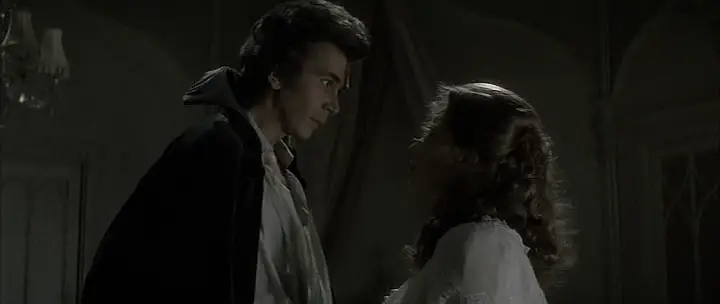 That, above all, is why I think it’s just fantastic that all Dracula movies are different. As a fan, I can get excited for all of them because I never really know what to expect. And when I do, I can try to map out which version of the character’s pop culture history they’re going with. I can’t say that I don’t care when major characters I love are entirely removed. Quincy Morris is one of the best characters in that book, and he almost never makes it to the screen whenever it’s adapted. Arthur Holmwood is usually combined with another character.
That, above all, is why I think it’s just fantastic that all Dracula movies are different. As a fan, I can get excited for all of them because I never really know what to expect. And when I do, I can try to map out which version of the character’s pop culture history they’re going with. I can’t say that I don’t care when major characters I love are entirely removed. Quincy Morris is one of the best characters in that book, and he almost never makes it to the screen whenever it’s adapted. Arthur Holmwood is usually combined with another character.
Dracula is told through a series of journal entries and newspaper clippings, etc. that make it extremely hard to adapt to film. It’s much better to take the basic concept and do your own thing with it. I can say with some certainty that the cast of characters in Dracula is my favorite ensemble of all time. Every single one of them brings something to the table, each represents something different, and yes, each are open to interpretation. I mean, this goes back to the beginning. The original Universal Dracula changed the story about as much as anyone could. They’ve been being constantly redefined since the 1930’s and even before that on stage.
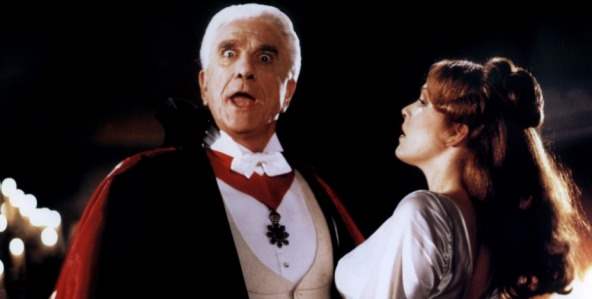 At the end of the day, Dracula himself is not a particularly likable guy in the novel. There’s not a lot to really compel the reader to see things from his perspective. I love that we can have both the snarling, monstrous Count, the outright villainous creature of the night, and also have the more charming, alluring Count. There’s room for both. I think that’s the biggest takeaway from anything like this. There’s always room for different versions, especially with a story as elemental and archetypal as this one. At this point, Dracula is basically a fairy tale and people can take it and do with it whatever they want. Not all of those will be good, of course. Some of them will be total bastardizations, I’m sure. I’m not so much here to argue that as much as I’m saying that the ones that are good, the ones that do stand out will be worth it.
At the end of the day, Dracula himself is not a particularly likable guy in the novel. There’s not a lot to really compel the reader to see things from his perspective. I love that we can have both the snarling, monstrous Count, the outright villainous creature of the night, and also have the more charming, alluring Count. There’s room for both. I think that’s the biggest takeaway from anything like this. There’s always room for different versions, especially with a story as elemental and archetypal as this one. At this point, Dracula is basically a fairy tale and people can take it and do with it whatever they want. Not all of those will be good, of course. Some of them will be total bastardizations, I’m sure. I’m not so much here to argue that as much as I’m saying that the ones that are good, the ones that do stand out will be worth it.
A story does not need to be a word-for-word adaptation in order to be a faithful retelling. Horror of Dracula changes many, if not most, of the details of the book but is still incredibly faithful to the tone and basic structure of the novel. A lot of these changes are for the better, too. Peter Cushing’s portrayal of Van Helsing is my favorite version, even including the Van Helsing of the book. It’s fun to have a competent, assured, often dryly sarcastic hero to serve as the proper match for such a larger than life villain.
 We don’t get endless bad versions of Dracula simply because they change the story. We get so many bad versions because it’s in the public domain and absolutely anyone can do whatever they want with it. We get Dracula on both the big budget and independent level all the time. I have reason enough to think that if I haven’t tired of it now, I never will.
We don’t get endless bad versions of Dracula simply because they change the story. We get so many bad versions because it’s in the public domain and absolutely anyone can do whatever they want with it. We get Dracula on both the big budget and independent level all the time. I have reason enough to think that if I haven’t tired of it now, I never will.
When Dracula pops into my head, I think of pop culture as much as I think of the original text. And I think that’s important. It’s not just the creeping, shadowy vampire of the page. It’s the endlessly endearing Count portrayed by Frank Langella. The cold, humorless villain of The Monster Squad. I think of Jess Franco’s Dracula and Dan Curtis’s production as well. I think of To Die For and Geena Davis in Transylvania 6-5000 and I even think of Waxwork. Every pop culture appearance or parody. I think of all of it, because it’s all part of the same entity.
Whatever interpretation you favor, however you slice it, Dracula is the story of a sad, lonely old man who left his ancient homeland to conquer the world… and succeeded.
